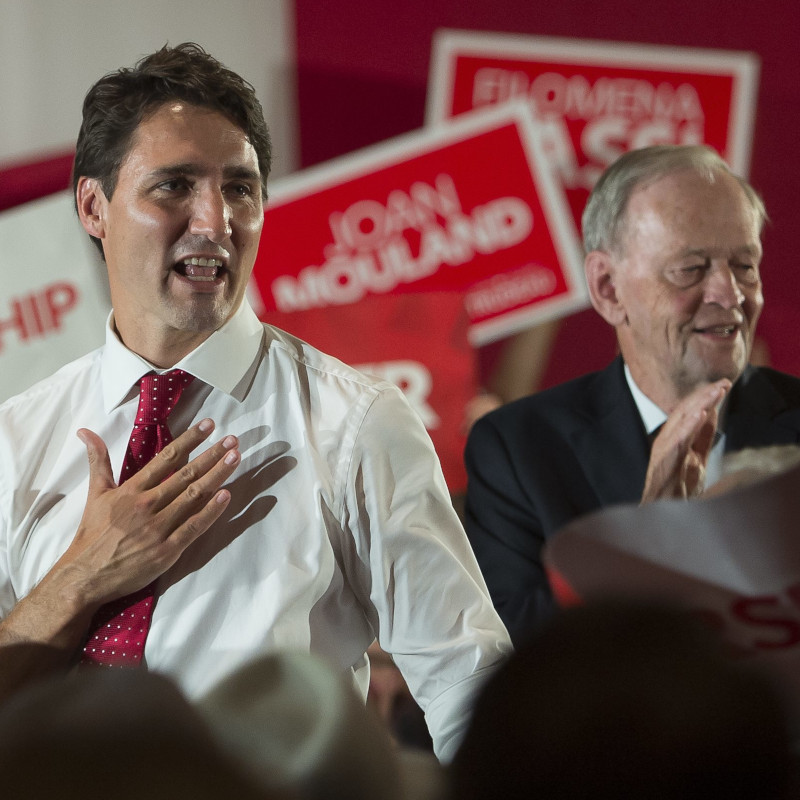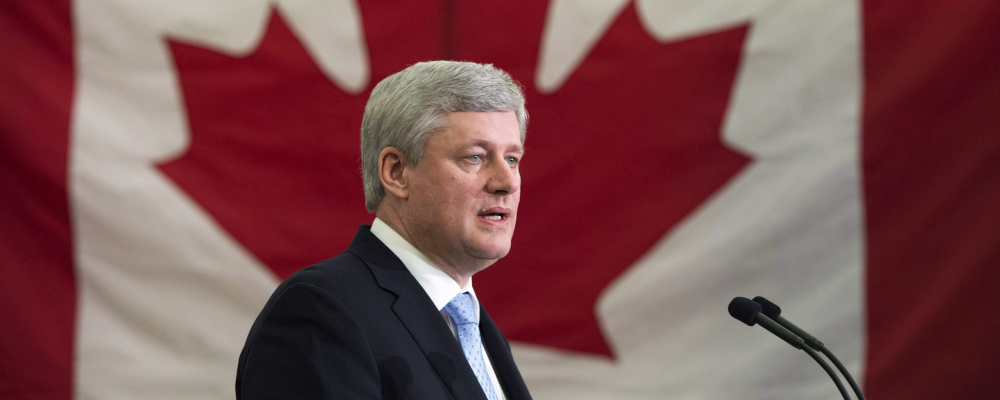The Hub launched with a core mission of getting Canadians thinking about the future. We’ve been stuck in the doldrums, pessimistic and polarized, for too long. To lay out a roadmap for the next 30 years of Canadian life, we asked our contributors to pinpoint the most consequential issue, idea or technology for the country in 2050. This series of essays by leading thinkers will illuminate Canada’s next frontier.
What issue, idea or technology may be of most consequence in 2050? There are, of course, different ways to think about the question. Of consequences to whom, or what? The economy, society, climate, even politics?
It seems to me that the answer lies in a place where these spheres intersect. I would argue that the biggest issue, idea or technology Canada must grapple with over the next 30 years is the health of its families in a world of new and evolving workplace arrangements, social norms, family demands, and demographic pressures. In order to lay the foundation for strong Canadian families over the coming decades, Conservatives must develop and put forward a comprehensive and modern family policy agenda.
Let me start with a key underlying truism: the political definition of insanity turns the classic definition on its head. In politics, doing the same thing over and over and expecting the same result is insane.
Conservatives in the English-speaking world came to political power and intellectual influence in the 1980 and 1990s on the economic issues of balancing budgets, lowering taxes, deregulation and free trade. This was the recipe that Margaret Thatcher (1979), Ronald Reagan (1981), Brian Mulroney (1984), David Lange (1984) and John Howard (1996) mixed in their own ways to form and hold government and deliver on (most of) these priorities. It was also the correct antidote to the failed policies of the 1970s that produced the triple threat of high inflation, high unemployment and high debt.
In fact, Conservatives (and conservatives) won these economic arguments so convincingly that these priorities were adopted by our political opponents. Here in Canada, for instance, Jean Chrétien balanced the budget, Paul Martin lowered taxes and Justin Trudeau renegotiated NAFTA.
To be sure, fealty to balanced budgets, deregulation, lower taxes and free trade has since faltered among Conservatives’ opponents. Yet, to be equally sure, expecting this same economic agenda to continue to bring Conservatives (and conservatives) to power is folly. It is, in fact, insanity.

This isn’t to say the agenda should be abandoned. It is to say, however, that the principles underlying its three core assumptions — the belief in free markets, the belief in subsidiarity and the belief in comparative advantage — should be applied to a new range of challenges.
Which brings me back to the most important issue facing Canada over the coming decades: the need to strengthen Canadian families and boost the country’s fertility rate. This is where, in my view, Conservatives (and conservatives) ought to put their energy and attention.
Stephen Harper showed us how. On his watch, Canada signed a record number of new trade deals and lowered the tax burden to 1950s levels. Harper also applied the principles of free markets, subsidiarity and comparative advantage to build the largest new social program in at least a generation, if not two.
Harper did that by rejecting and dismantling a $5 billion Liberal one-size-fits all institutional child care scheme and replacing it with cash benefits paid directly to parents. In its last year in office, the Harper government delivered almost $19 billion directly to families with children.
This gave parents power over how to spend the money (free markets), allowed the lowest societal unit possible to decide how to spend the money (subsidiarity) and recognized, as Harper put it, “the experts, mom and dad” (comparative advantage). These child benefits made life much more affordable for families with children and reduced child poverty in Canada by almost a third. And as they’ve done with lower taxes and free trade, Harper’s political opponents have made further enhancements to child benefits and have continued to see child poverty drop.
In short, Harper applied conservative principles to make children more affordable, reduce child poverty and strengthen families. This helped him to win elections, but it also helped win the broader debate about childcare policy and child benefits, and win it decisively.
Conservatives today need to take this lesson and apply it to (at least) three other ways to strengthen families in Canada over the coming decades. The first two focus on assisting families with the transition out of the labour force to have children and the transition back in, if and when they are ready.
First, Canada needs a maternity/paternity infrastructure that is much more generous, flexible and paid, as much as possible, directly to parents — three social policy principles consistent with free markets, subsidiarity and comparative advantage. Except in Quebec, maternity/paternity benefits are currently run through the Employment Insurance program. These programs should be divorced from Employment Insurance, along with the payroll revenues needed to fund it, and given over to the provinces so Canada can benefit from different approaches and learn what works best.
Conservatives cannot continue to do the same thing and expect the same results. We can no longer expect electoral success with an old and tired (though true) economic agenda.
A new maternity/paternity infrastructure should be much more generous — in terms of income replacement — and flexible in terms of the amount of time off it provides. It should adapt to a shared parenting model and to today’s flexible work arrangements. Consideration should also be given to the special needs of adoptive and foster families. Families should be able to take a minimum of one year off with minimal or no reductions in net family income and should have the flexibility to spread those benefits out over as much as another year — or even start benefits before the baby is born. The system should be as indifferent as possible to which spouse provides the at-home care and should also recognize the reality of gig work. Changes to provincial labour laws will also be required to minimize career disruption.
Second, when parents are ready to return to work, Canada’s childcare infrastructure should be there to support — without overtly favouring — that decision. The current infrastructure can be broadly understood as Ottawa operating on the supply side of the childcare equation with provinces operating on the demand side. Ottawa’s main contribution to childcare is a generous (though poorly targeted predominantly to rich parents) tax deduction, while provinces regulate and fund childcare spaces.
This deduction must be converted into a refundable tax credit that is based on family income and is most generous to those who need it most. It should also be made more generous overall. Provinces should continue to regulate childcare, remaining mindful of the need to enhance flexibility while also considering ways to encourage new spaces — I favour a baby bonus voucher system (to give parents maximum choice and flexibility).
The third issue Conservatives need to think deeply about — with an eye toward developing solutions — is declining fertility rates. It is an overgeneralization (but also not wrong) to state that a good portion of our economic growth in the last half-century has come from rising female participation rates and rising female income levels. In short, the number of people working and the incomes they earn are critical components of economic growth. And both of these things are about to fall off a cliff due to retiring baby boomers and continuously declining birth rates.
If we are to maintain our long-term growth, not to mention continue to afford the government we currently enjoy, we’re going to have to produce more kids. Continuing to boost child benefits, making those benefits universal — after all, we should value kids in all families, not just some — and creating more generous and flexible maternity/paternity and childcare benefits will work on the margins to encourage families to have more children. There are also thousands of public policy decisions that discourage, or do not do enough to encourage, having children. Perhaps it’s time to add a fertility lens to the existing economic and gender lenses we use when making public policy decisions.
Conservatives will need to be both judicious and sagacious when deciding which pro-family policies to promote. They will need to be very careful with (if not outright avoid) issues and defences of policy that are overtly religious or sectarian. And they will need to avoid issues that threaten electoral success (such as banning abortion) or have already been decided (such as the definition of “family”). Religious Conservatives in particular — of which I am one — need the discipline to focus their political efforts on what is both desirable and doable, not merely on what is desirable according to their own point of view. Turning desirable issues into issues that are both desirable and doable is almost certainly best done outside the political sphere — where much good work is happening, and must continue.
Conservatives cannot continue to do the same thing and expect the same results. We can no longer expect electoral success with an old and tired (though true) economic agenda. We need a strong, vibrant and ambitious new agenda for the coming decades, one that is both social and economic. I believe that agenda should be centred around strengthening and growing Canadian families.
Recommended for You

Geoff Russ: A future Conservative government must fight the culture war, not stand idly by

DeepDive: Two-parent families: why they’re so important—and why there’s cause for concern in Canada

The Weekly Wrap: The rise of JD Vance and the reshaping of the Right

Sean Speer: The federal government needs to back off—and the provinces need to step up









